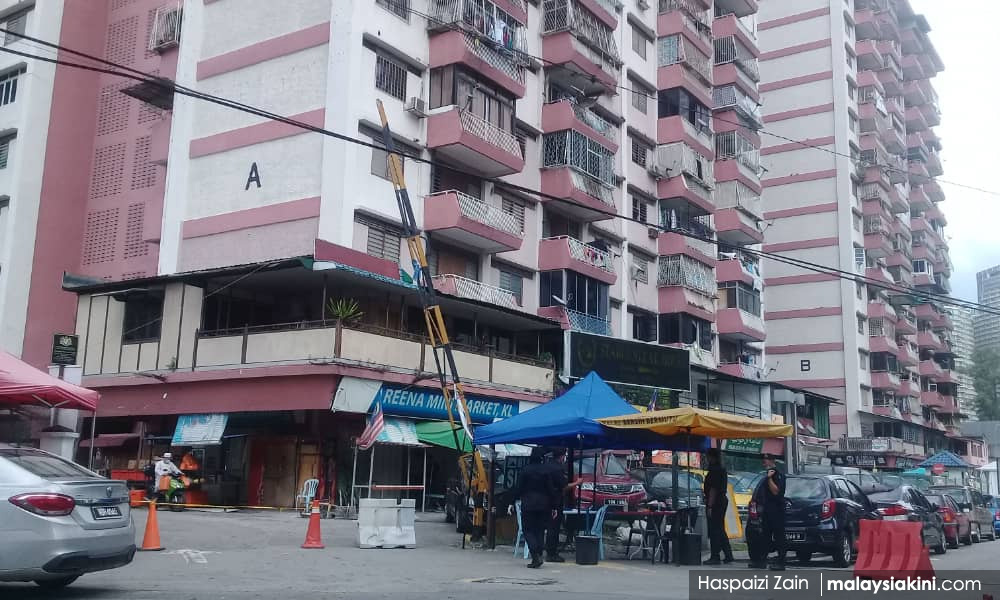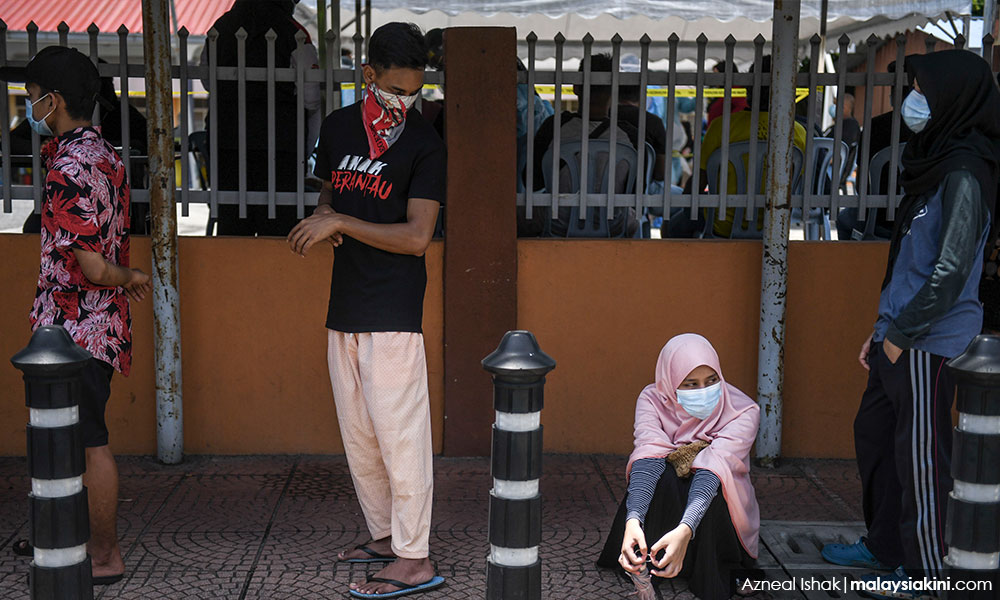The New Economic Policy (NEP) is probably far off our minds with the Covid-19 pandemic and political pandemonium gripping the land, but its legacy is all around. The NEP, formulated under the post-May 13, 1969 emergency rule, transformed Malaysia more than any other master plan.
The 50th anniversary of its July 1971 tabling in parliament calls for a re-appreciation of its contributions, evaluation of its omissions and missteps in popular discourses, and consideration of where Malaysia can go from here.
Looking back: NEP strengths and shortfalls
The NEP’s signature contribution to Malaysia was its “two-pronged” strategy to (1) reduce poverty irrespective of race; and (2) accelerate social restructuring to reduce and eventually eliminate the identification of race with economic function. This strategy derived from its analysis of the nation’s defining socioeconomic problems. Malaysia’s poverty rate was estimated at 49 percent in 1970, inter-racial socioeconomic inequalities were severe.
Importantly, this distinction gave the NEP coherence, by distinguishing fundamental policy objectives and instruments. Poverty alleviation pursues a distinct objective of providing basic needs and uplifting livelihoods of the poor, largely through universalist interventions such as infrastructure, universal primary education, rural development, and measures to boost income.
On moral and practical grounds, assistance for the poor should operate on a universal basis, regardless of ethnicity or other identity traits. The NEP’s first prong, with its “irrespective of race” clause, also served as an assurance to all Malaysians, especially minority groups, that national policy looked out for them.
Social restructuring largely concurs with affirmative action implemented around the world. This set of policies focuses on promoting participation, upward mobility and capability of disadvantaged groups in specific areas – higher education, high-level occupations, business, and wealth ownership – primarily through group-targeting and preferential treatment based on identity, such as race, ethnicity, caste, gender, etc.
In Malaysia, the NEP’s second prong initiated a massive expansion of pro-Bumiputera preferential programmes.
The NEP correctly understood that the two prongs are “interdependent and mutually reinforcing”. The implications of social restructuring are paramount. Social restructuring requires a specific set of policy instruments; social restructuring cannot be achieved by using poverty reduction instruments.
In other words, Malaysia’s goal of growing bumiputera SMEs, professionals and managers cannot be achieved by merely “helping the poor irrespective of race”. Helping the poor can double up to also promote bumiputera advancement, but only in specific areas, especially higher education – not across the board.
However, the NEP fell short in a few consequential ways, and public discourses have largely reproduced these flaws.
First, the NEP inadequately specified the instruments of the second prong. While it was mindful that higher education achievement, public sector and GLC employment, procurement and SME development would be vital policy sectors, development plans did not systematically focus on these challenges.
A clearer articulation of social restructuring policy mechanisms – that they operate in specific areas and confer preferential treatment – might have inclined the NEP to recognise that executing the policy entailed some degree of exclusion of non-bumiputeras.
This could, in turn, prompt the policy to be more purposeful and energetic in developing the capability and competitiveness of policy beneficiaries and laying out long-term plans to graduate out of receiving quotas and preferential treatment.
Second, the NEP specified a twenty-year timeframe, 1971-1990, but was oblique about what would happen in 1990. At its inception in 1971, the NEP expressed an aspiration for Bumiputeras to be “full partners” in the economy “within one generation”, implying that policies might be rolled back.
But there was neither clarity nor commitment toward any specific closure. At the same time, the NEP recognised that some aspirations, particularly the bumiputera commercial and industrial community, would take longer than “one generation”.
These were actually astute observations but were so obscure that no one took notice, including policymakers themselves. Pro-bumiputera policies are diverse in scope and method and have been rolled out at various times, hence it is quite illogical and unrealistic to expect that the whole system can be shut down all at once.
The NEP did not start in one big bang in 1971; there is no reason to expect that it should end in one big bang in 1990. There was also no articulation of policy spheres, such as the public universities or the public sector, in which Malaysia might want to continuously strive for equitable group representation.
Again, crucial aspects of the long-term progress of the NEP were not adequately addressed. Silence on the matter allowed for inflated and impassioned expectations of the NEP’s all-at-once termination in 1990 to take root. Until today, many hold to the view that the way to move on from the NEP is to reimpose one almighty expiry date.
Third, the NEP placed an inordinate emphasis on equity ownership, at the expense of higher education, capability development and SME growth. Development policy became consumed by the 30 percent Bumiputera ownership target, in which Malaysia perennially underachieved based on official statistics. Across the decades this goal drove various wealth transfer schemes that are more prone to patronage and corruption, including Malaysia’s gigantic failed privatization exercise of the 1990s.
Fixation with the 30 percent bumiputera equity target persists on both sides of the NEP debate. Policy advocates assert that this remains the biggest unfinished business, while some detractors regard the target as already achieved – based on alternative calculations.
However, this critique also places over-importance on equity ownership as the be-all and end-all of the NEP. Both sides have erred. Equity ownership has proven to serve poorly as a policy driver; the focus should instead be on cultivating dynamic and competitive enterprise.
At the same time, trying to bury the NEP by focusing on equity ownership statistics reproduces the error of equating this one element with the entire edifice, and fails to advance a cohesive reform agenda.
Moving on: Three steps and two pillars
Malaysia has progressed by leaps and bounds since 1971. Household income poverty steadily declined to 15 percent in 1990 – exceeding the NEP target of 17 percent – and six percent in 2019.
The outcomes of Malaysia’s social restructuring regime are extensive and complex, and intensely debated. The NEP has immensely expanded bumiputera access and participation in the key policy sectors of higher education, professional and managerial positions, enterprise and ownership. However, the programmes have the insufficiently developed capability, competitiveness and confidence in the community to undertake policy change.
These are the most consequential shortfalls, which must be addressed with renewed vigour, and departure from the predominant discourse of the past fifty years.
Other important advancements include the expansion of social protection (minimum wage, cash transfers, etc), basic education and public healthcare, and increased consciousness of basic rights and commitment to rights-based development within the global sustainable development framework. Recent years have also seen specific policy attention to vulnerable groups, notably the Orang Asli and Indian communities, and to women’s representation in decision-making positions.
How should Malaysia chart its way after fifty years of the NEP? I suggest three steps.
First, we must re-appreciate the NEP’s judicious two-pronged distinction between poverty reduction and social restructuring. A popular stance today, which has become mainstream in the past decade, holds that Malaysia should pursue social restructuring objectives by using poverty reduction instruments.
This just does not work; we must coherently maintain the distinctions, and be much clearer about where they overlap. Policies that provide basic needs and welfare for all are one thing; policies that expand the participation and achievement of targeted groups are another. Preferential treatment based on need can replace preferential treatment based on race not in general, but in specific areas, predominantly in higher education.
Second, we must also broaden the scope of the NEP’s two-pronged strategy which is decidedly inadequate for addressing the demands and challenges of a more sophisticated Malaysia. Poverty is no longer a defining problem. Poverty reduction, while continually a priority, should no longer serve as one of two national pillars.
Likewise, the assurance that the system looks out for all Malaysians must run deeper than the NEP-conceived maxim of “helping the poor irrespective of race”, which still echoes today.
Similarly, social restructuring as originally conceived is too narrow for Malaysia today. It was construed only in terms of inter-racial redistribution and specifically in terms of bumiputera advancement, whereas various other policy beneficiaries, including sub-ethnicities and gender, are increasingly recognised, and the broader quests for justice and fairness have evolved.
Third, we should stop the fixation with a single, monolithic expiry date to the NEP, and with 30 percent equity ownership as the basis for determining whether policies continue or terminate. Bumiputera policies are extensive and embedded, and different programmes require different targets and timelines.
Hence, we should formulate policies, targets and timelines that are specific to each policy sector, with a focus on promoting participation, capability and competitiveness of all designated beneficiaries, including the bumiputeras but also Orang Asli and Indians.
This historic juncture calls for a new, twin-pillared strategy that reinforces the strengths of the NEP’s two prongs and fills in its omissions, while also incorporating changes over the past fifty years and addressing the contemporary situation. Malaysia’s future progress should be guided by comprehensive principles of clearly specified domains.
The first pillar rests on a national commitment to safeguarding equality, in the specific domains of human dignity, welfare and rights. Of course, helping the poor irrespective of race – of gender, religion, and all forms of identity too – will be covered within this rubric. But surely there is more to it.
Surely it is time for all Malaysians to be officially and universally assured of the ways that they are equally provided for, especially in terms of fundamental rights and freedoms, basic schooling, social protection and minimum wage, and public healthcare.
The second pillar fosters fairness in a broad range of socioeconomic life – revolving around participation, mobility and capability – in which policies grapple with more complex issues of distribution, scarcity, and contending group interests.
This policy pillar will oversee group-targeted preferential policies that promote equitable representation and diversity. It will also subsume the continuing implementation of the NEP’s second prong, with critical attention to making it more effective in promoting participation and capability and to incorporate, on a sector-by-sector basis, selection mechanisms based on need and merit.
Polarised debate, between proponents defending the NEP’s perpetuation and opponents demanding termination, will persist as long as a “big bang’ mindset of the NEP appearing all at once – and hence vanishing all at once – prevails. Breaking out of this stalemate requires a more thorough rethink.
Equality and fairness can serve as principles to anchor policies and accommodate changes over time, dispensing with the misplaced notion of a catch-all expiry date such as 1990.
Fifty years from now, Malaysia will assuredly still need to safeguard equality and foster fairness. Instead of debating the NEP’s continuation versus termination, the future is better served by forging a new consensus on enduring principles. - Mkini
LEE HWOK AUN is Senior Fellow at Iseas-Yusof Ishak Institute, Senior Fellow at IDEAS, and Associate Research Fellow at MIER.
The views expressed here are those of the author/contributor and do not necessarily represent the views of MMKtT.







No comments:
Post a Comment
Note: Only a member of this blog may post a comment.